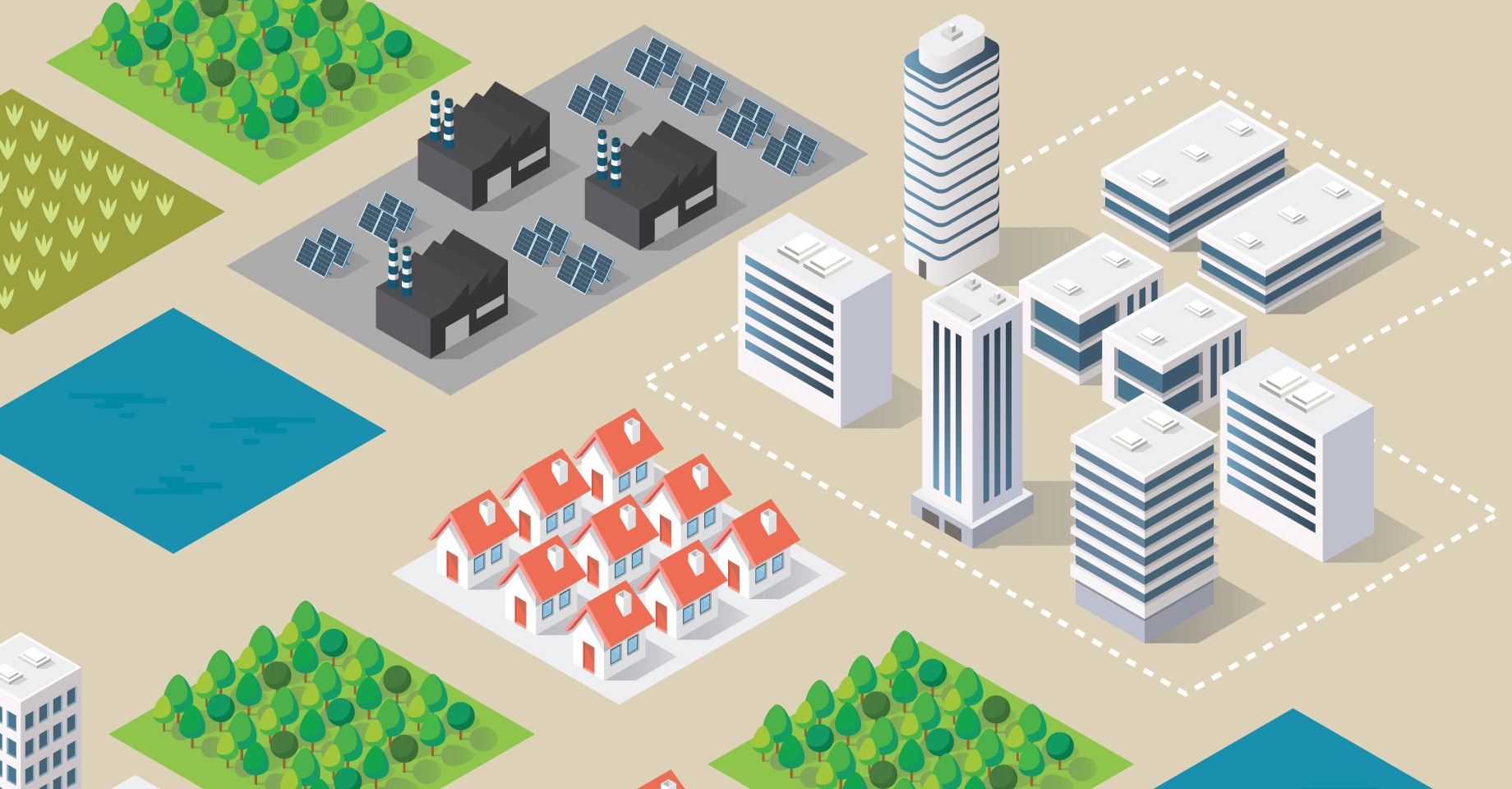Over the past two years, dramatic shifts or planned changes to zoning laws or regulatory environments have made it easier to build housing, the largest commercial real estate asset class. Housing shortages are driving the shift; lack of affordable housing in high-demand, job rich areas is driving up rents, pricing out essential workers, and exacerbating the homelessness crisis. Legislators across the country are looking to address the issue and boost housing production by cutting zoning and regulatory red tape for developers,
Housing production efforts are creating new opportunities for your development team, especially for firms looking to build high-density residential properties and mixed-use assets near transportation hubs. Before pursuing complex residential development projects of this kind, you will want to pay attention to shifting regulations, as many open the door to larger-scale efforts. Zoning law changes may even change where your team decides to pursue a project next, opening up new corridors in high-demand or emerging markets.
Here’s a quick state-by-state snapshot of the zoning laws driving the next decade of development:
State-by-State Zoning Law Analysis for Developers
Each state has its own unique approach to boosting housing production, and though there are common trends among the legislation, it’s important to understand each state’s policies and the implications for your development process.
Positive Zoning Law Changes
Florida
Florida passed the Live Local Act, which enforces something called the 40% rule, where if at least 40% of proposed units are set aside for affordable housing, local officials must approve the plans on any site zoned for commercial, industrial, and mixed-use without public hearings, a rezoning process, or land use change requirements.
Legislators and developers alike remain confident the Live Local Act’s zoning law changes will boost housing production rates across the state and will be particularly effective in creating opportunity in areas zoned industrial instead of commercial.
Key Facts:
- Legislation passed statewide
- Average House Price 2023: $383,000
- Best Approach: Building high-density development in urban, suburban, and rural areas
Massachusetts
Former Governor Charlie Baker signed economic development policy into law that changed zoning requirements to allow the development of high-density residential housing near public transportation hubs. The guideline requires most cities and towns in eastern Massachusetts to include a multifamily district of at least 50 acres near MBTA subway or bus stations. It’s too early to tell how much the new housing policy translates into actual construction. Still, the law is a first step toward building multifamily housing for transit-oriented, walkable communities.
Key Facts:
- Legislation passed and in effect
- Average House Price 2023: $558,000
- Best Approach: Building high-density, multifamily housing near transit
Zoning Law Changes Facing Opposition
New York
New York’s attempts to update the state’s restrictive permitting processes and local regulations stalled in legislative sessions. Lawmakers proposed the New York Housing Compact in 2023, attempting to produce new homes, incentivize affordable housing, and promote transit-oriented and climate-friendly construction. The legislation failed to pass and was met with resistance from both political parties and suburban community representatives resistant to multifamily housing.
Mayor Eric Adams proposed a “City of Yes” plan to boost housing production in New York’s metropolitan areas not long after, aiming to increase development by cutting red tape and center equitable planning. The legislation may face an uphill battle in the public hearing, review, and approval process given past resistance.
Housing law woes in New York State represent the importance of stakeholder buy-in for your development team. Hosting community meetings to hear local concerns and answer any questions often helps you increase awareness about building benefits and overcome regulatory or public opinion hurdles.
Key Facts:
- Legislation failed
- Average House Price 2023: $411,000
- Best Approach: High-density housing across the state
Texas
Lawmakers in Texas attempted to pass two major bills to rezone parts of the state and address the state housing shortage in 2023, as census data indicates the state’s population is outpacing home construction. The two bills would’ve drastically reduced the amount of land required for housing to be built on and aimed to eliminate or reduce restrictive compatibility requirements such as laws in metropolitan areas like Austin that restrict building height based on proximity to single-family homes.
In May of 2023, the bills’ zoning law changes faced opposition from legislators of both parties as well as community groups and failed to pass into law. Tensions around housing in the state – which also failed to pass a bill easing restrictions on accessory dwelling units (ADUs) – may signal difficulties in the market for developers in spite of the state’s restrictions.
Key Facts:
- Legislation failed
- Average Housing Cost: $294,000
- Best Approach: High-density housing in limited markets of opportunity
Virginia
Efforts to ease housing shortages in Virginia have not yielded successful legislative changes. The discussion around accessory dwelling units (ADUs or granny flats) exemplifies the main disagreements around housing in the state. In February, a Virginia House panel killed a statewide ADU bill. The Supreme Court also passed a recent decision that expanded the definition of alleged harm caused by land use approvals and made it easier to challenge disputes. Developers are therefore more vulnerable to litigation in the state, which can slow down or disrupt project timelines.
Key Facts:
- Legislation failed
- Average Housing Cost: $361,000
- Best Approach: Suburban areas with single-family homes
Mixed-Results Zoning Law Changes
California
Gavin Newsom recently signed AB2011 and SB6 into law in California to address housing shortages. AB2011 allows residential construction to break ground on sites zoned for commercial use without approval from local governments, while SB6 lets developers build on commercial land provided projects go through an environmental review process. State officials have also funded another round of the California Housing Accelerator, which provides funding to projects stalled by unable to get tax credits. Developers will want to keep an eye on both of these initiatives, as zoning changes and increased funding may increase opportunities for residential or mixed-use development throughout the state.
Key Facts:
- Legislation passed and is in effect
- Average House Cost: $728,000
- Best Approach: High-density housing in high-demand or secondary markets
Oregon
Oregon’s state legislature passed what is essentially a ban on single-family home zoning in 2019, implementing a measure that requires cities with more than 10,000 people to allow duplexes to be built in areas zoned for single-family homes. The legislation was a step toward increasing housing production, and in February of 2023, state legislators introduced efforts to further speed up housing construction by simplifying local rules. The proposal wants to annually estimate the amount of new housing needed in cities with populations of 10,000 or more and would hold cities accountable if they don’t take steps to cut the red tape and boost development.
Key Facts:
- Legislation passed and in effect
- Average Housing Cost: $485,000
- Best Approach: High-density multifamily housing in cities and other key markets
Colorado
Proposition 123 passed in Colorado in November of 2022 and requires state legislators to dedicate $300 million of the state’s budget annually to affordable housing development. Supporters of the proposition say the law will create 170,000 houses and rental units over the next few decades, addressing the state’s estimated 225,000 home shortage. Denver and other key markets saw an influx in residents during the pandemic, and new legislation in combination with high demand means the state has lots of opportunities for developers.
Key Facts:
- Some legislation passed, some failed
- Average Housing Cost: $540,000
- Best Approach: High-density residential properties in key markets
Washington
Governor Jay Inslee passed 10 housing bills into law in May of 2023, with much of the legislature designed to help boost the supply of housing amid soaring prices. Many of the bills are designed with housing production in mind, including House Bill 1337, which makes it possible to permit and construct more accessory dwelling units (ADUs), and House Bill 1110, which requires cities to create more types of housing, such as duplexes and triplexes. The Washington Department of Commerce estimates the state needs to build up to 1 million more units of housing over the next 20 years, and the bills already passed indicate the state is eager to tackle this concern aggressively with developer collaboration.
Key Facts:
- Legislation passed and in effect
- Average House Cost in 2023: $563,000
- Best Approach: Rural and suburban development
Georgia
Georgia introduced House Bill 417 and House Bill 514 to address the state’s affordable housing shortages. House Bill 417 would prevent counties or municipalities from regulating a long list of building design elements, from the style of porches to the number of rooms. House Bill 514, would bar local governments from indefinitely extending moratoriums on new housing construction. Local moratoriums or zoning holds have held back new development in communities across the state in the past. Representatives say the two bills are meant to cut bureaucratic red tape, boost private sector innovation, and increase access to affordable housing for Georgians.
Key Facts:
- Legislation in debate
- Average House Cost in 2023: $306,000
- Best Approach: Multi-family housing across the state
Idaho
City officials in Boise, Idaho are poised to pass a major zoning overhaul that would combat sprawl in the rapidly growing state and could impact housing growth for decades. The law is intended to streamline the development process by removing public hearings for some applications and not notifying nearby residents about all projects. Legislators in particular want to encourage denser, more urban, and mixed-use projects in a growing market with rising demand.
Key Facts:
- Legislation recently passed
- Average House Cost in 2023: $435,000
- Best Approach: High-density residential housing in urban and suburban areas
Navigating the Future Amid Zoning Law Changes
Legislation housing production passing across the United States presents more opportunities for real estate developers. Zoning law changes and regulatory changes often permit ambitious, high-density residential projects to move forward. Regulatory policies designed to increase the production of multi-family homes and repurpose underutilized infrastructure into new housing are likely to increase in popularity as housing shortages continue. By following the trends on the legislative level, you can ensure your firm is identifying and pursuing key opportunities in growing markets.
Technology can play a key role in helping your team overcome challenges or obstacles in housing production. Economic uncertainty may continue to complicate large housing projects, as some housing initiatives have failed to result in buyers or renters in a down-market. Budgeting accurately and weighing potential risks in the pre-development stage of a project can allow your team to better understand the potential risks and rewards of your proposed project and move forward with confidence. Modern real estate development software can play an integral role in your financial planning. Northspyre’s platform keeps budgets on track from pre-development to stabilization, informing you of opportunities to save money and eliminating overspending. Our platform notifies you about potential exposures, spending forecasting, and potential contingencies.
Download our guide Driving the Next Decade of Development, State-by-State for more insight into how you can identify top project opportunities amid the shifting regulatory landscape.



